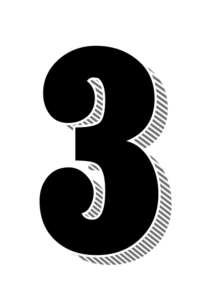For any hopeful writer, the very first thing he or she must choose is a point of view (POV). However, the point of view element is quite often chosen wrongly by the writer when not examined properly.
So, how does this simple choice go awry and why does choosing the correct POV matter? After doing research on the subject, I found that it boils down to keeping the reader interested enough to turn the page. To achieve this, there are two critical elements that must be investigated first before the author puts the fingertips on the keyboard. The first: who is the directed audience? And the second: who will be the main character (MC)? Let’s look into exactly what type of story deserves a particular POV.
First-Person Point of View
First-person POV, in simple terms, is as if a real person is narrating moments of his or her own life to someone they know is listening.
- I
- We
- Us
Let’s break this down, more:
Metafiction
Without expounding too much on metafiction (self-awareness), a writer should know that all works of fiction are meta to one degree or another. Although they are made up of stories, they consist of themes, messages, symbols, and metaphors that are created specifically for the reader to examine personally.
Voice 
The inner monologue is vital to the first-person point of view.
It gives the reader an up-close understanding of what the narrator is thinking about herself, her opinions on other people, and subjects. In addition, because it is a POV designed by its nature to display such closeness to the character’s thoughts and emotions, first-person POV allows for a unique voice. Voice, of course, meaning here is the arrangement of how the author writes his prose. Each real-life individual has their own way of speaking. This is no different in first-person POV. The prose, therefore, can be specialized.
Because third-person POV stems more from a nature told by the actual author, it finds itself using a more formal approach with average to long sentences in its prose. Whereas first-person POV uses the same length of sentences as third, it is common and acceptable if broken down into shorter sentences, as well. Even sentences using only one-word works well because they display actual thoughts of a real person. First-person POV is common in many young adult narratives to display their clever slang and perspectives. Detective fiction is known also for its use of this POV due to its need to separate clues from the investigator.
Unreliable Narrator
A specific technique only made possible with the first-person point of view, the factor of unreliability permits deception from the character to the audience. Depending on the genre, the character himself, or from an authorial license, the main character will sometimes fool the reader by applying red herrings or even outright lying. If you think about it, the reader is at the mercy of the narrator in all regards–we only know what they decide to tell us. Usually, if done right, this deception allows for a great climax where lies are revealed, and twists are involved.
Audience and Character
Many times, a story will have beautiful prose, compelling characters, and vivid descriptions, but when it comes to the MC it falls flat. That is not to say that the MC herself is uninteresting, but perhaps a different point of view should have been chosen to express her thoughts. First-person should be used to describe moments of intense emotions. This can be problematic if those moments are uneventful to the progression of the character or plot or if the unique prose that first-person allows is dull.
Next, is the audience. Does the genre call for first-person POV? I have read some literary fiction– a genre noted for its respect in fiction writing and ability to use gorgeous prose–that truly bored me so badly I still haven’t finished the novel. Why? Although the emotional exploration was there, the author decided to have each character have his or her own chapter, all told in first-person POV. This shouldn’t have been an issue. However, each character sounded the same. Their voices were all uniform and not differentiated enough from the others. It is not necessarily wrong to have more than one character narrate in the first-person, but it is a gamble that should only be chosen if the author is confident enough to devise characters with different voices.
Second-Person Point of View
- You
The second-person POV is one that readers will likely see the less. Other than a few sentences within a novel or short story using “you,” authors tend to stray from this point of view.
Why, though? If it utilized far less than other perspectives, then why not exploit it? Perhaps it would start a revolution among the writing community.
Maybe so. However, second-person POV is so far removed from the literary conversation that the novel would likely need to be an original juggernaut to break any barriers to publish. Know that many in the writing community see second-person POV as gimmicky and uninspiring. Still, if that is your desire, then I say go for it.
Lack of Free Will
Before you do, you should know that writing from a second-person point of view makes the reader the main character. It forces an identity upon the reader from the narrator. The narrator tells you (the reader) who you are and informs you of the plot around you.
Basically, the reader becomes, in a way, a pawn at the narrator’s expense.
Whatever happens to you, it is because you lack freedom of choice, and therefore, have no willpower when it comes to the narrator’s wishes. In other words, you do what the narrator tells you. This could make for an unpleasant ride throughout the story.
I know some readers have an issue with this obvious lack of freedom. Even though all stories are under a narrator’s direction, second-person can make the reader feel trapped. Second-person POV doesn’t have the power of illusion like first and third.
Meta at its Most Potent
Like aforementioned, all fiction (all art) is meta to some degree. The second-person point of view is completely self-aware. The incorporation of you, the reader, as a character doesn’t just break the fourth wall, it destroys that wall and then stares at you.
Writing in the second-person shouldn’t be that difficult, as there is really no difference in comparison to the first and third POV’s regarding pronoun usage. The difficulty will come from a community of readers who are not familiar with reading in second-person POV for an entire story.
Third-Person Point of View
- He, She
- They
- It
This is the POV most chosen among fiction writers.
Well, the third-person is the most flexible. This point of view has the option to narrate the story and inform the details of the MC by how close inside the character’s head the author wishes to get.
In my creative writing course in college, we learned this point of view by thinking of it as a movie camera. The proximity of that camera defines how much information the readers get to know about the MC, the other characters, and the plot. Third-person has three options for narration. Each one revolves around a particular orbit of the MC.
Objective
The definition is in the term. Objective, in the arena of literature, means told by a character who doesn’t judge.
The most impersonal of the three, the objective narrator never gets inside the head of the MC or any other character. Instead, it lacks judgment of anything. And rather informs the audience through the actions of the characters and the dialogue. If readers want to know the emotions of the MC or anything about the inner thoughts of a character, this is not the point of view to read. However, if a reader wants to have a story where they can make up their own minds without POV persuasion, then the third-person objective is perfect for them.
For authors choosing this method: rejoice. The objective strips away any responsibility to describe a character’s reasons through an inner monologue but still can reveal character through their physical actions.
The third-person objective is the mirror opposite of first and second-persons.
Limited
Probably the most popular of all narration options, limited places the thoughts in only one character. Authors have the choice, however, to hop characters by separate chapters. This happens quite often, actually. While in limited, the narrator can only describe thoughts about one specific character. It can only describe the actions of other characters. Many authors get around this by switching to different characters when beginning new chapters. So, the main character from the last chapter could become a supporting character in the next chapter.
Omniscient
Also called the “God perspective,” this option allows everything.
The narrator is everywhere. It knows about the MC, about the side characters, the dog, even the wind. It has the power to switch points of view by a paragraph or even mid-paragraph. Omniscient also acts as a double-edged sword. Many times, it becomes confusing which character is narrating.
By the end of the novel, the reader will have all the information concerning the plot and character. This helps to grab the author’s message and form a fuller picture. A setback would be that omniscient lacks mystery, even at the basic level. Because a reader knows all the facts as they happen (ed), twists are rare in this narration.
Conclusion
To tell a good story, you should decide upon which character you want narrating that story. Then, you should decide which point of view would best suit that chosen character. If the MC is a mild, meek teenager with confidence issues, then perhaps first-person POV would work the best. The audience could see his growth from shy to master that it would make for an interesting read. If you want to focus on the plot without any character judgment, then go with a third-person objective. Whatever point of view you choose, take into consideration the type of character that warrants an introspective examination of his or her emotions. Play to the reader’s expectations by knowing when to or not to limit the point of view.
Check out my posts about building realistic characters here.
And if you’re interested in learning about a degree in creative writing you can read this.
https://www.grammarly.com/blog/first-second-and-third-person/
~M

